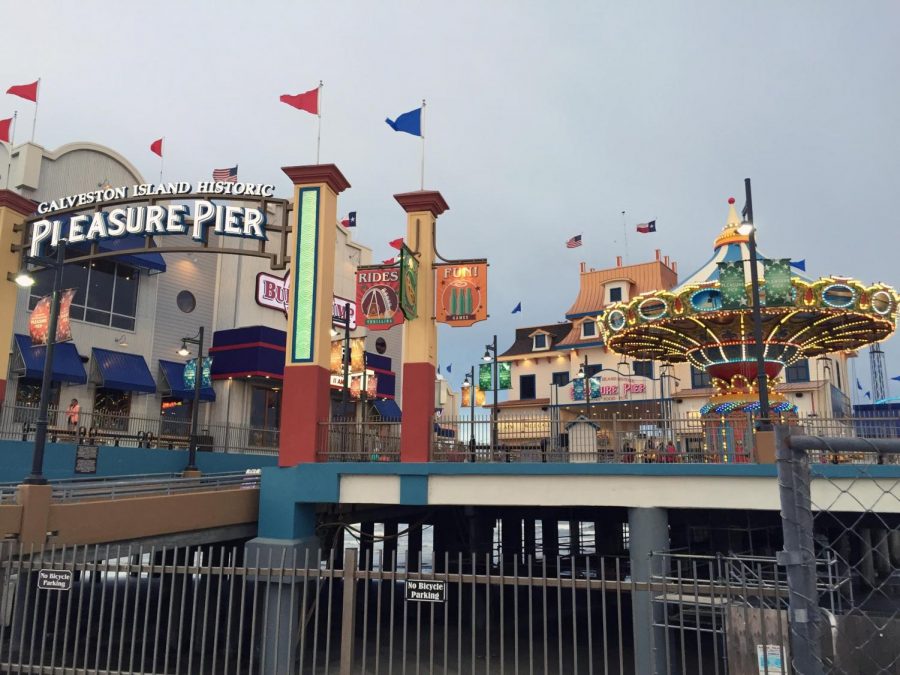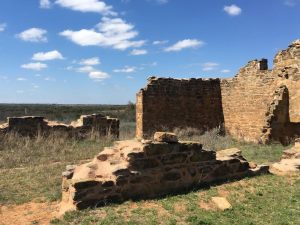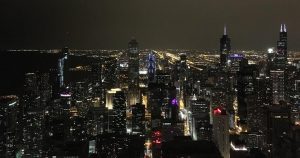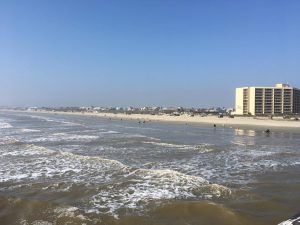Rhodes Traveled: NASA and Galveston
What better way to escape the heat than learning of Texas’ involvement in the space race?
courtesy of the Texas Historical Commission
The Galveston Island Historic Pleasure Pier is a classic amusement park that stretches 100 feet out into the Texas gulf coast. Although built in 2012, it is a recreation of the famous Pleasure Pier built in 1943, which was destroyed in by hurricane Carla in 1961. Photo courtesy of the Texas Historical Commission
July 18, 2019
 With triple digit heat coming to Austin, many residents are looking to escape through means of travel. But what if you don’t have money for a plane ticket to Montana or time for a road trip to Colorado? Fear not, for there are plenty of suitable Texas destinations. Last summer it was Corpus Christi; this summer, we’re going to Galveston.
With triple digit heat coming to Austin, many residents are looking to escape through means of travel. But what if you don’t have money for a plane ticket to Montana or time for a road trip to Colorado? Fear not, for there are plenty of suitable Texas destinations. Last summer it was Corpus Christi; this summer, we’re going to Galveston.
This coastal city with a population of 50,000 sits about 50 miles from Houston, and 200 miles from Austin. Halfway between Houston and Galveston is the Johnson Space Center, which will be celebrating the 50th anniversary of the moon landing this summer.
The Johnson Space Center (named after president Lyndon) is NASA’s main facility for training and research of human spaceflight. When arriving, you are greeted by an enormous statue of the Space Shuttle resting on the back of a Boeing 747. Although not the real shuttle or airplane, these are accurate sized replicas, and you can even go inside of them.
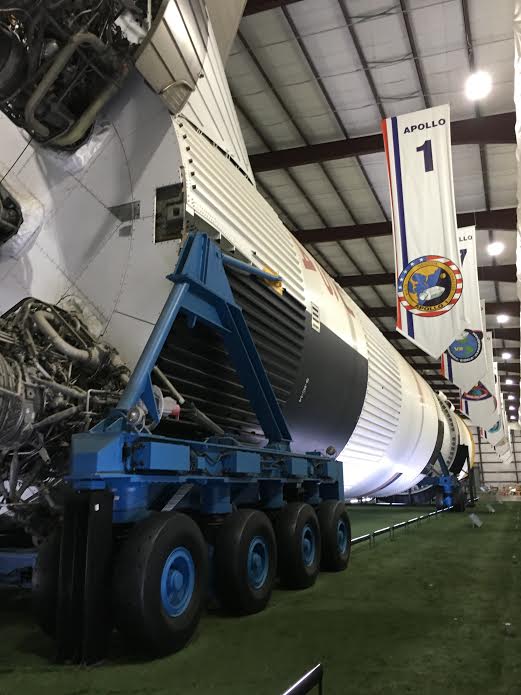
The decommissioned Saturn V rocket sits on its side in a warehouse at the Johnson Space Center. If NASA’s funding had not been heavily decreased after the Apollo 17 mission in 1972, this rocket would have been the next to go the moon.
Entering through the front doors will take you to a huge room filled with information about space, including diagrams, models and interactive activities for the younger guests (although no one is stopping you from learning about the difference in weight across the planets with the Angry Birds). The rest of the building contains other space related things, like the hall with real spacecraft used in the early to mid 1960s by some of the first Americans in space, including John Glenn and Gus Grissom. You can see their pictures on the back wall of the main room, which features pictures of every American space mission. Inside of the 747 by the entrance there is information on the Space Shuttle missions, and the shuttle itself shows what it would have been like for the astronauts who lived in it for weeks at a time, and what the shuttle was used for, like satellite repairs and ISS stuff.
If you’re looking for more NASA experiences, they offer a tour of the Space Center grounds, which is quite interesting. Some of the more impressive sights include the mock training lab, which features scale models of space equipment and vessels used to train the astronauts for their time in space, usually aboard the International Space Station. They also show the training Mission Control, which is used to get the up and coming ground crew ready. When I was there, the old mission control from the ’60s was not opened to the public, but they should have that ready for the 50th anniversary. The last stop on the tour, and my personal favorite, is a real decommissioned Saturn V rocket that, until the funding was cut, was completely ready for the moon. It’s quite large. The rocket is resting on its side, but when upright it is a towering 363 feet, taller than both the Texas Capitol (which is taller than the U.S. Capitol) and the Statue of Liberty. After you’ve had all the space you can take, be sure to stop by the gift shop on the way out, which has just about any space related item you could want. I recommend the astronaut ice cream sandwich.
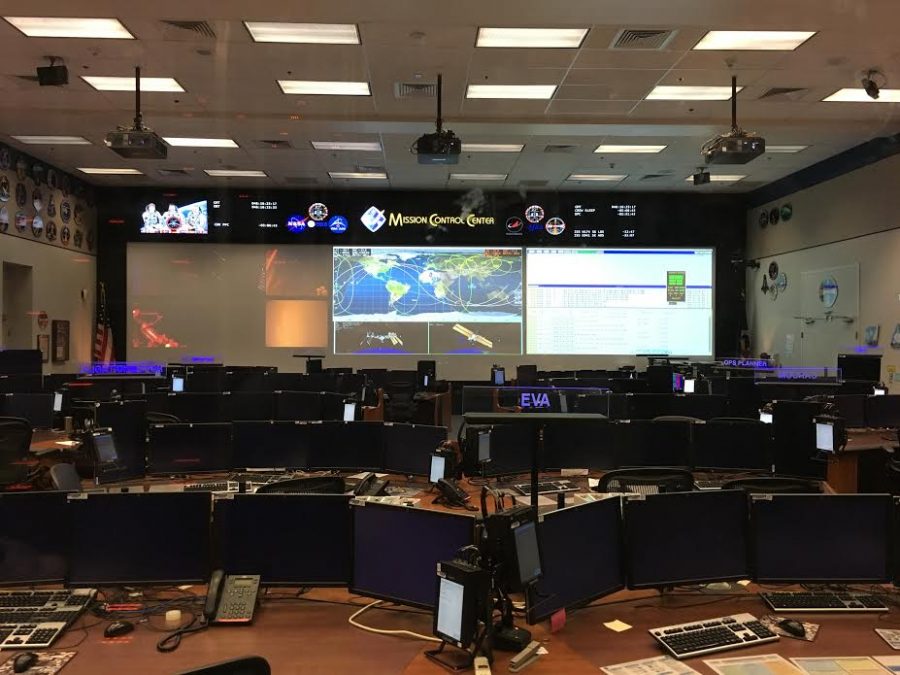
The training mission control at NASA is used to prepare the ground crew for real space missions. Although not to the moon, NASA is still heavily involved with the International Space Station.
If you’d like to eat something other than space ice cream for a meal, there are some good restaurants just down the street from the Space Center. One example is Burger Nation, which offers some unique menu items. Ever had mac and cheese on a burger before?
Once you’ve had a sufficient amount of NASA and weird hamburgers, Galveston is just a half hour drive away. Founded in the early 1800s by the Spanish, Galveston played an important role for Texas as a shipping port and naval base. Nowadays it’s known mostly for its amusement parks and beaches. One such amusement park is the Galveston Island Historic Pleasure Pier. Although built in 2012, it is a recreation of the famous Pleasure Pier built in 1943, which was destroyed by hurricane Carla in 1961. The pier features a roller coaster, the iron shark and several other rides, as well as a surplus of your classic amusement park food. The other main park is Schlitterbahn Waterpark Galveston. Although not as historic as the pleasure pier, and a little more expensive, it’s a great place to spend an afternoon and even offers hotels if you’d like to spend the night. The third major attraction on Galveston Island is Moody Gardens. Featuring a rain-forest exhibit, aquarium, beach, hotels and even a golf course. If this sounds a little overwhelming, there are some classic public access beaches on the northern point of the island, called East Beach.
To learn a little more about Galveston’s history, be sure to check out the museum ship ELISSA. Built in 1877 by a Scottish ship building company, she is 205 feet long and 99 feet tall, and has three masts. After a 90 year career of carrying goods across the Atlantic, the ship was converted into a museum. But unlike the other retired ship turned into a museum on the Texas gulf coast, the USS Lexington, ELISSA is still seaworthy, and a few times a year a group of hardworking volunteers will take her out to sea for a day trip around the gulf.
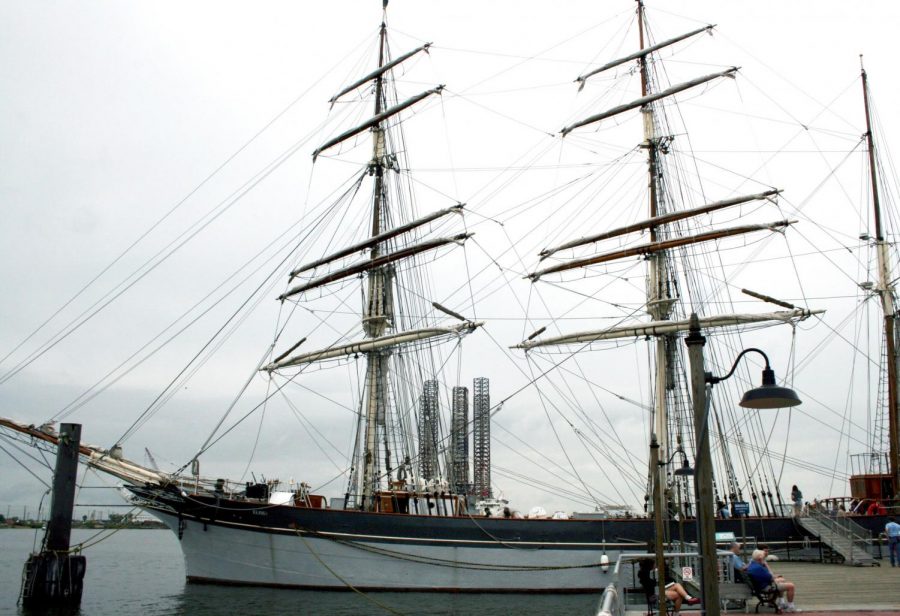
After a fun filled weekend of rocket ships and water parks, it’s a three-and-a-half hour drive back to Austin, not including traffic in Houston (just don’t leave at 5 p.m.). Other than Florida, not many states have space facilities that are so close to the beach. And with the 50th anniversary of the moon landing as added incentive, Houston in general and especially NASA will be fun to visit this summer.


